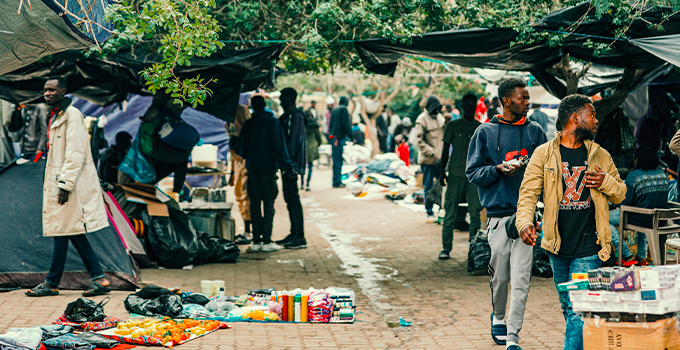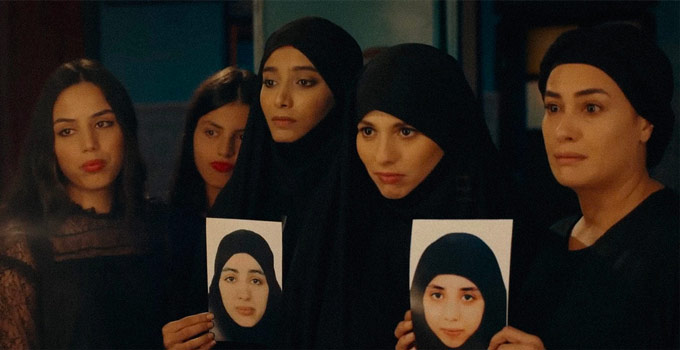A recently published survey (Rouissi, 2011) reported that among the 1389 Tunisian participants, 49% of respondents were pro-Marzouki, 33% were against, whereas 18% had no opinion. A similar survey conducted by the same agency the day after Essebsi’s nomination showed that 90% of the 2229 respondents were favorable to the former Prime Minister’s nomination. Preliminary comparisons showed another intriguing fact: the major third perceived quality of Essebsi (50%) is that “he has the stature of a President” and the third major defect seen in Marzouki (43%) is that “he lacks the stature of a President”.
Puzzled by such discrepancy, I have tried to provide in this article a brief psychological account about some of the latent contributing factors that might explain the reported trends. The basic assumption of my cross-sectional analysis is the following: Although, the Tunisian society is currently witnessing significant changes [1], the anchoring of the archetypal image of the “Father” seems to be deeply rooted in the Tunisian collective unconscious (Jung, 1959) and is likely to bias their political choices.
The concept of collective unconscious, as originally defined by Jung (1959), is considered as part of our unconscious mind. It contains different archetypes also referred to as archaic images more often compared to Platonic “eidos” (i. e., ideal forms of the perceived objects). Although the concept is still hard to grasp, it is however currently widely assumed that it represents some sort of innate and contentless psychic structure that can steer our emotions and experiences within the world. It is widely admitted in many sociologic and anthropologic studies that fatherhood in patriarchal societies go hand in hand with authority.
The archetype of the Father can be described with various attributes ranging from protectiveness and strength to knowledge and wisdom. Moreover, religious representations of God, especially in monotheist societies, represent a vital source of fuel to the archetype of the Father in the collective unconscious.
From this perspective, when we solicit answers to questions dealing with any of the mentioned attributes from respondents with a culturally significant collective unconscious of Father archetypes, then it is likely that their answers will somehow reflect this archetype. Hence, the critical question here is: how can we uncover such a hidden structure based on the available information from the two above-mentioned surveys?
One way to do this is to apply some recent and powerful computational techniques based on graph theory and network analysis. Modern visualization techniques are proved to be very helpful in finding patterns in networks and data. Based on the reported information in both surveys, I have indeed generated a proximity matrix that can be easily transformed into a relational network. I have modeled this scale-free network based on four hierarchical levels and dividing them into two subgroups: one factual subgroup (levels 1 and 2) and one abstract subgroup (levels 3 and 4) as follows:
- Level 1. Nodes that match the extracted six most significant positively perceived attributes for Marzouki and Essebsi (see links of surveys).
- Level 2. Two nodes that correspond to the two target persons (Essebsi and Marzouki).
- Level 3. Nodes that match the attributes categories for each target person: Positively perceived attributes seen in Essebsi can be captured by the following categories: Experience, Wisdom, and Stature. Likewise, the perceived qualities in Marzouki can be captured by: Integrity, Humility, and Knowledge.
- Level 4. One single node that matches the Father Archetype.
The matrix values correspond to proximity weights based either on the size of observed proportions from the surveys or on the semantic and relational closeness between nodes.
Results are shown in the Figure given below. The size of the node is correlated with the number of its connections in the network. The intensity of connections with the target node (Father Archetype) is shown gradually from red (highly connected) to light orange (weakly connected). Nodes’ labels were reported in French as in the surveys. As we can notice, the node WISDOM is the closest one to the Father Archetype node, whereas it has about the same closeness to the later as to Essebsi’s node. Although Marzouki node is the most connected one, it did not make it the closest one to the Father-Archetype node or even to some of its attributes, which corroborated my assumption. Moreover, it is interesting to mention that one of the repeatedly studied archetypes of the collective unconscious is the archetype of the “Wise Old Man”. It is basically a related form to the Father Archetype that stems from our folkloric legends and myths.

Figure 1. Link analysis network representing the underlying structure between the proximity matrix nodes using Gephi software [Bastian, M., Heymann S., & Jacomy, M. (2009). Gephi: an open source software for exploring and manipulating networks. International AAAI Conference on Weblogs and Social Media].
In conclusion, given this pattern of results, it is likely that respondents seek in Essebsi a Father-like figure with a prominent flavor of wisdom. Of course, many other factors are involved, but from a psychological perspective it is more interesting to investigate the latent dimensions of people’s choices and behaviors.
Further investigation will help disentangle the selective exposure effect (selection of media information that matches and reinforces our believes) and archetype salience and will try to provide a more general account within a larger population rather than conclusions drawn based only on Tunisian internet users’ perceptions.
Notes:
[1] Tracking objectively such changes is not obvious. Nonetheless, the so called democracy index is a good criterion. In the 2010 issue of The Economist Intelligence Unit, Tunisia was ranked 144 out of 167 countries with an overall score of 2.79 out of 10 (full democracy). In the latest issue (2011), Tunisia is now ranked 92 with an overall score of 5.44.
Key References
– Jung, C. (1959). Archetypes and the Collective Unconscious. (See Wikipedia).
– Rouissi, C. (2011, Décembre 21). Enquête: Le Président Mohamed Moncef Marzouki aux yeux des internautes tunisiens. Tunisie Numérique.
– (2011, Mars 6). Mr Béji Caïd Essebsi plébiscité par les internautes tunisiens. Tunisie Numérique.





Tunisians Citizens Are Akin to Choosing a “Father-like” Leader http://t.co/g5ad3aMG
Interesting research by @YousriMarzouki: Tunisians Citizens Are Akin to Choosing a “Father-like” Leader http://t.co/6pdR78aI v @nawaat #BCE
RT @ifikra: Interesting research by @YousriMarzouki: Tunisians Citizens Are Akin to Choosing a “Father-like” Leader http://t.co/6pdR78aI v @nawaat #BCE
RT @ifikra: Interesting research by @YousriMarzouki: Tunisians Citizens Are Akin to Choosing a “Father-like” Leader http://t.co/6pdR78aI v @nawaat #BCE
Tunisian Citizens Are Akin to Choosing a “Father-like” Leader : http://t.co/SbHJz1qi
Nawaat: Tunisian Citizens Are Akin to Choosing a “Father-like” Leader: A recently published survey (Rouissi, 201… http://t.co/PJ3Pht8K
Tunisian Citizens Are Akin to Choosing a “Father-like” Leader : http://t.co/p9em4ahO
http://t.co/69hdXKfS
Tunisian Citizens Are Akin to Choosing a “Father-like” Leader : http://t.co/XsnZU3Hm By Yousri Marzouki !
Tunisian Citizens Are Akin to Choosing a “Father-like” Leader : http://t.co/riF2GFV9
#tunisie #psycho
#Tunisian Citizens Are Akin to Choosing a “Father-like” Leader : http://t.co/LR7Dm55N
I see that s wrong ,cause I think sebssi he failed completely mainly among young people,he showed many times he was a liar as he did not regnize that were snipers as his speeches were not honest and the period he ruled nothing was changed and his political skills does not mean anything to needy jobless people from poor and forgotton zones is much better to repeat an other resarch
Tunisian Citizens Are Akin to Choosing a “Father-like” Leader
http://t.co/RJ61XEAO
@ahmed, I think we both agree about the fact that we need, as I literally mentioned at the end of the article, that: ” Further investigation…will try to provide a more general account within a larger population rather than conclusions drawn based only on Tunisian Internet users’ perceptions”. On the other hand, the reasons you mentioned correspond to what we call in psychology the explicitly perceived dimensions and they only represent the tip of the iceberg leaving deep inside all the untold dimensions. Although, I definitely agree with what you said, my tentative comparison aimed to uncover such unconscious perception regardless of any explicit reason put forward in respondents’ mind.
Thanks a lot for sharing your opinion. Peace :)
YM
Tunisian Citizens Are Akin to Choosing a “Father-like” Leader http://t.co/eS3oP78S
“@yannleroux: Tunisian Citizens Are Akin to Choosing a “Father-like” Leader http://t.co/VPQWKptE”// cc @RiFahem @Fediia
thank you DR.MARZOUKI for this analyse .
Tunisian are fated to changes.
it would be interrresting to mesure this psychologic aspect in the feture with same chreterias and touch if the revolution had an impact on this “need of paternalism”.
thank you again for the depth of this analyse.
M.S
@ Mr marzougui slah, Thank you very much for your appreciation. I see your point and it is definitely worthy to be taken into account.
Such research strategy is a bit effort consuming and has to be carefully conducted due to what we call “history variables”. In other words, between the time you take the first and the second measure, a lot of things can be involved and it will be hard to disentangle real contributing factors to the outcome.
Although this said, I’m currently working on a project with a quite similar goal based on memory recall and impression formation to see the impact of the media in changing people state of mind.
Again, thank you for your feedback.
YM.